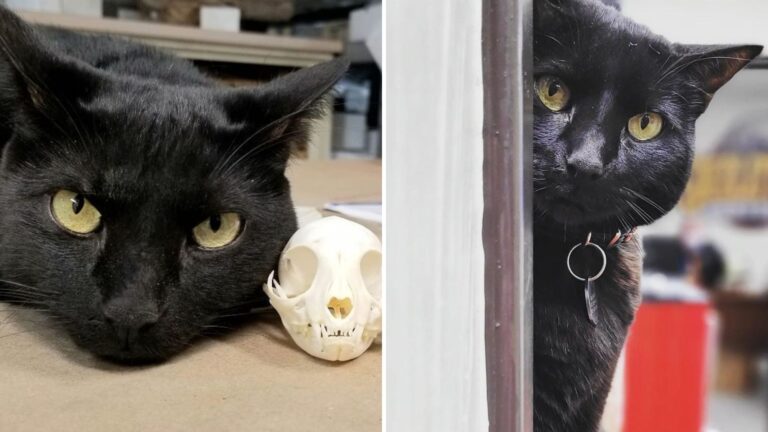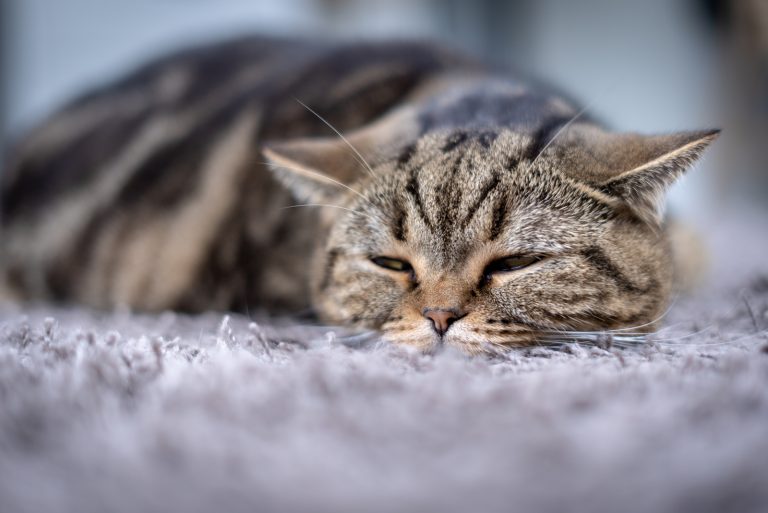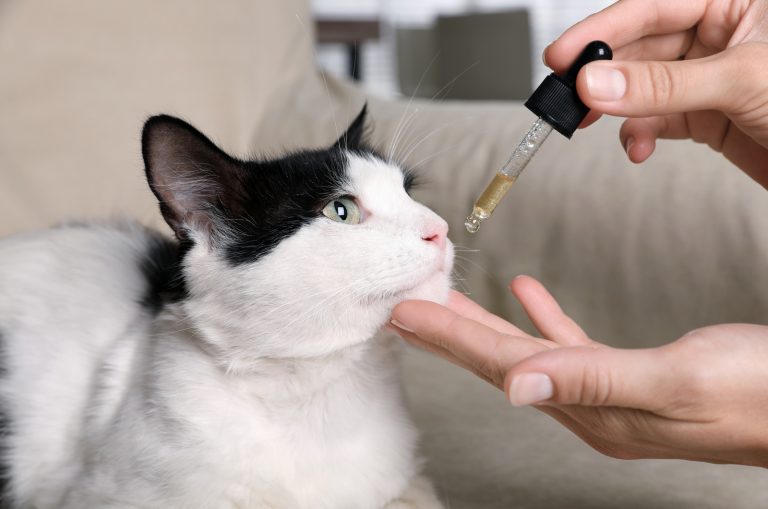How Do Cats Mate? A Full Guide To Feline Reproduction
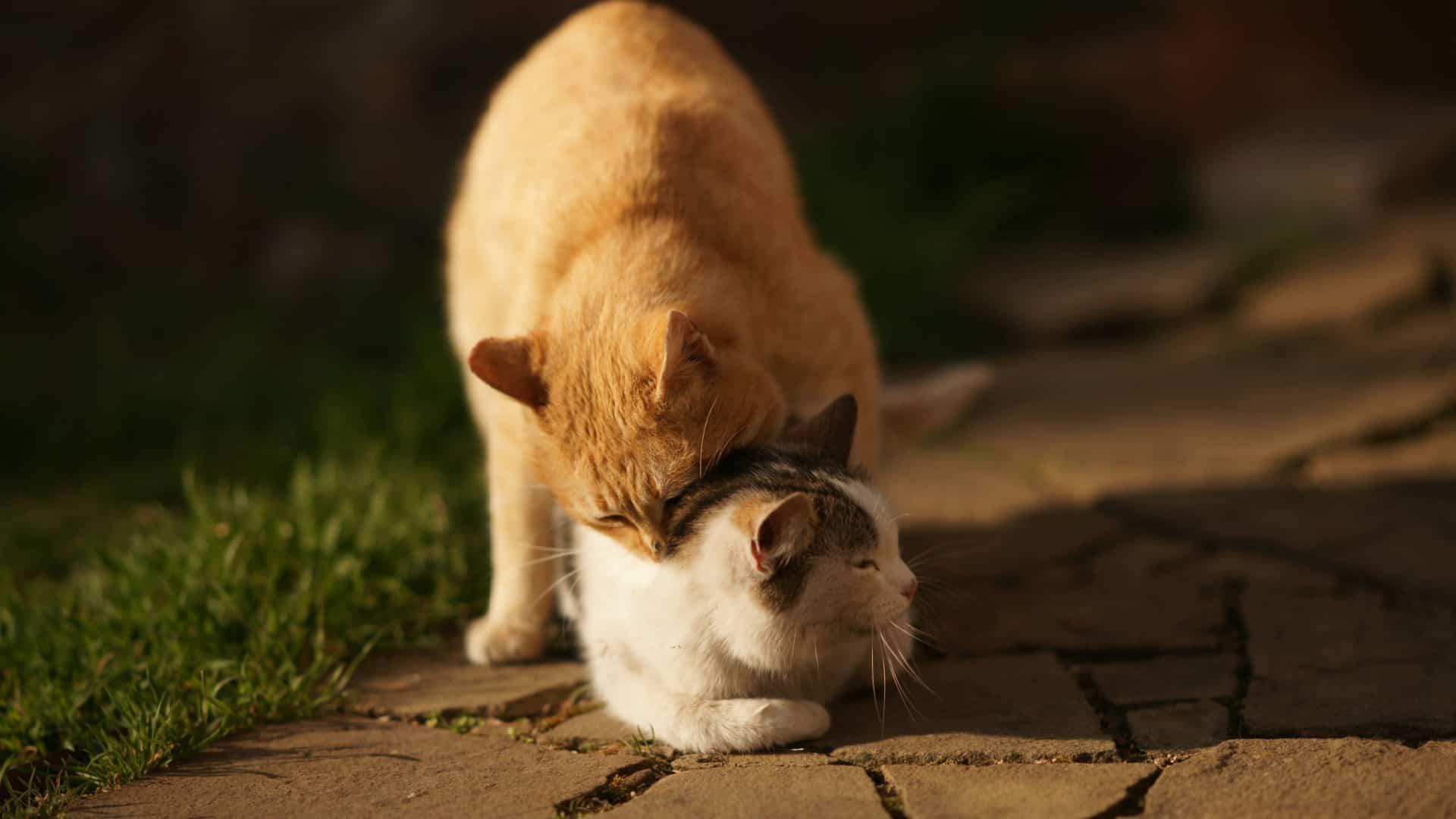
It’s good to know the basics about feline reproduction as it’s an essential part of cats’ lives. Every cat owner has to think about their kitty’s reproductive health, as there is no avoiding the fact that our felines have a natural urge to mate.
When queens go into heat, they attract tomcats, and mating occurs. Mating usually happens during the breeding season, as queens don’t tend to mate outside the breeding season.
You might be surprised to learn that the act of mating lasts very briefly and is accompanied by the queen throwing her claws out toward the tomcat she just mated with…
How do cats mate? is a question that has to have crossed your mind at some point. Therefore, I suggest you continue reading to find out how exactly cats mate, how long the mating lasts, and why most kittens are born in April and May!
How Do Cats Mate?
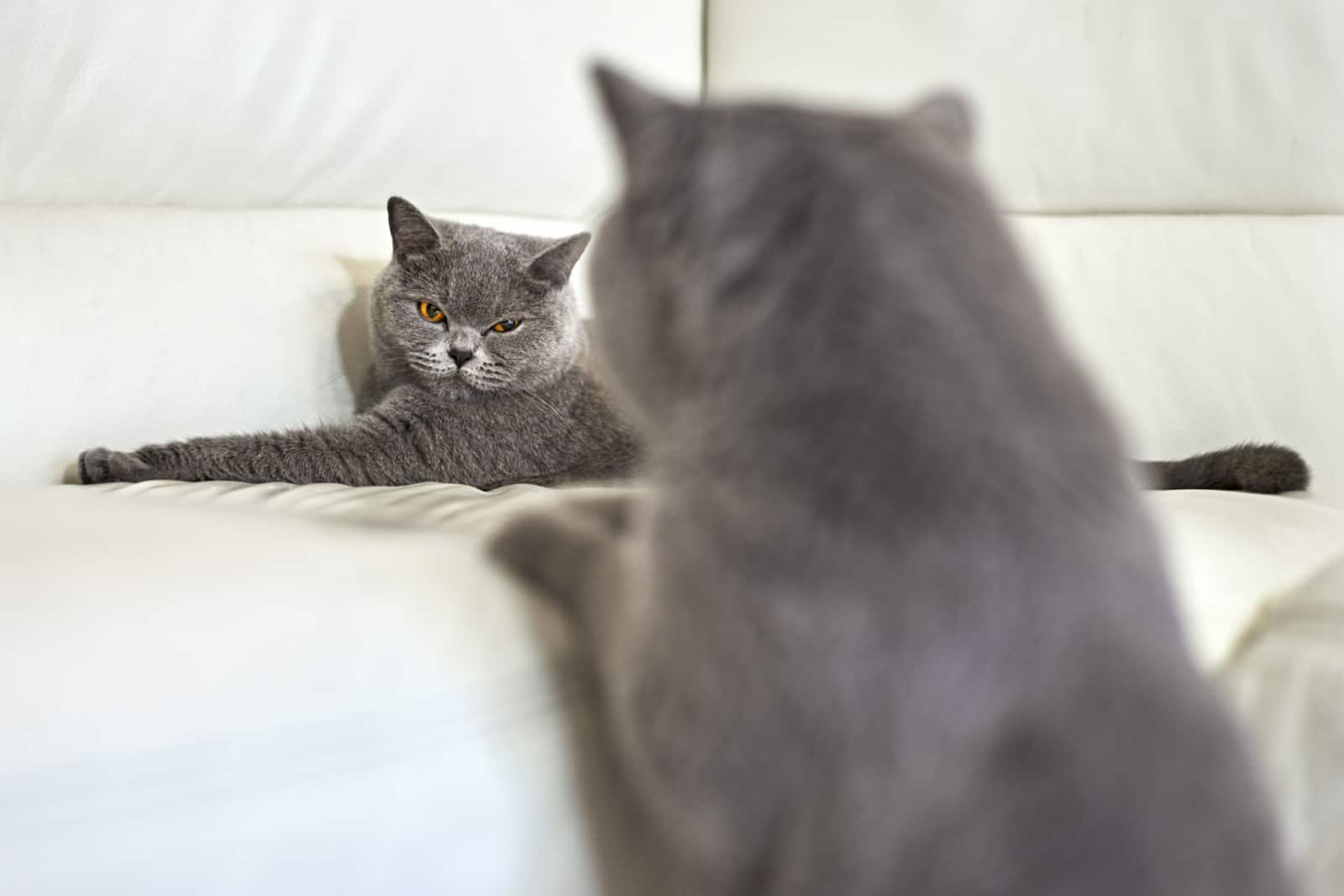
Step 1: Courtship
When a female goes into heat, the entire area is alerted by her scent and vocalizations. Tomcats will gather around the females and get into loud, bloody catfights with rivals if they recognize the cues.
Before copulation occurs, tomcats and queens engage in ritualized courtship that might last many hours. Cats in the process of courtship engage in chase and avoidance behavior.
The female will adopt the standard lordosis stance when she is prepared to mate. Males that initiate mating too soon will encounter an extremely hostile response from the female.
Step 2: Mounting
The process of copulating between mating partners begins with mounting. False mounts, or those without intromission (the act of penis insertion into the vagina), do happen, albeit some males experience them more frequently than others.
False mounts are common in many species and can be used to assess a female’s receptivity, get her ready for actual mounts, demonstrate dominance, or they may simply signify an unsuccessful attempt at copulation.
Step 3: Copulation
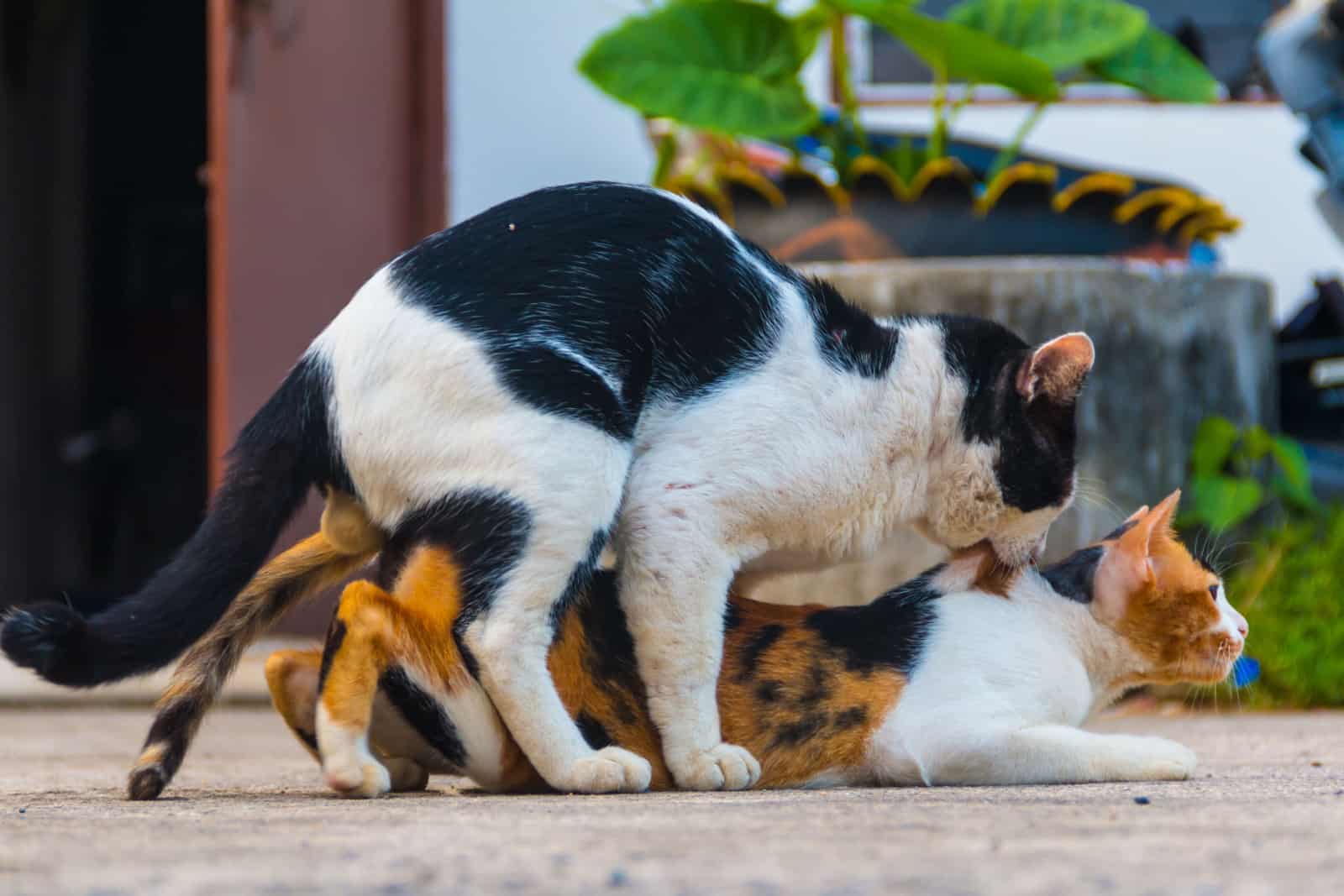
During copulation, the male mounts the female cat, and he also bites her neck to hold her in a demonstration of dominance. To release herself, the female will scream, spin, roll, or strike the male with her paw.
The tomcat holds her by the neck with his teeth to prevent her from biting him. He does this to protect himself – it is thought that biting relaxes the queen and keeps her from turning around and attacking him. The act of copulation itself is very brief.
Step 4: The Aftermath
The queen will roll or thrash around after the tomcat leaves and then clean her vulva. This is known as the “after response” and can last up to ten minutes.
The queen usually allows up to 30 matings throughout a heat cycle with several toms and can be ready to mate again in as little as five minutes or as long as thirty after mating.
Related: Why Do Female Cats Attack Males After Mating? Learn Now
How Long Does The Act Of Mating Last?

After a female cat displays the lordosis position (putting her rear end up in the air and her head towards the ground), a male cat eager to mate will grab hold of the female cat.
The mating lasts very briefly – up to four minutes, contrary to the courtship that can last hours.
After mating, female cats usually start cleaning themselves, rolling on the ground, or attacking the tomcat they’ve just mated with.
Mating Induces Ovulation In Female Cats

The process of an ovary releasing mature eggs is called ovulation. After they’re released, the mature eggs travel to the oviduct, where they meet the tomcat’s sperm and get fertilized.
The fertilized eggs then travel to the uterus, where they find a cozy spot in the uterine lining and implant themselves. This voyage of the fertilized eggs to the uterus usually takes about 10-14 days. These implanted fertilized eggs will then grow into kittens!
For all of this to take place, ovulation has to be induced. This is not something that happens to women, so this is a female cat-specific event. How is ovulation induced?
In female cats, ovulation is induced by mating.
Female cats can mate anywhere from 1 to 20 times on their first day of the estrus cycle (otherwise known as heat). They can mate with multiple tomcats multiple times a day, which will stimulate ovulation.
The ovulation usually starts about 24 hours after mating. If a female cat does not mate, ovulation will not happen, meaning there will be no eggs released that could be fertilized.
Why Do Cats Scream When Mating?
If you’ve ever heard a cat mating, you may be curious why it sounds more like a vicious cat brawl with screaming and scratching rather than pleasant cat cuddling. Hearing them can be very unsettling if you don’t know what causes the female cat’s cries.
Towards the end of mating, a female cat tends to be noisy, and the male cat sometimes starts screaming. Once mating is over, and the male begins to remove his penis, the queen’s behavior becomes quite frantic: her pupils dilate, and she starts meowing loudly.
Intact male cats have barbed penises, and the female cat will frequently scream when the male cat withdraws. Essentially, a male cat’s thorny penis causes pain for female cats as it is being removed from her.
Some people, unaware of the breeding season on the horizon, may even become concerned about the cats when they scream.
I remember I got tricked like that a few times myself. I heard a strange noise outside my window, and I got really worried. But when I went outside to check what was happening, I saw that the two cats were just mating.
At What Age Do Cats Start Mating?
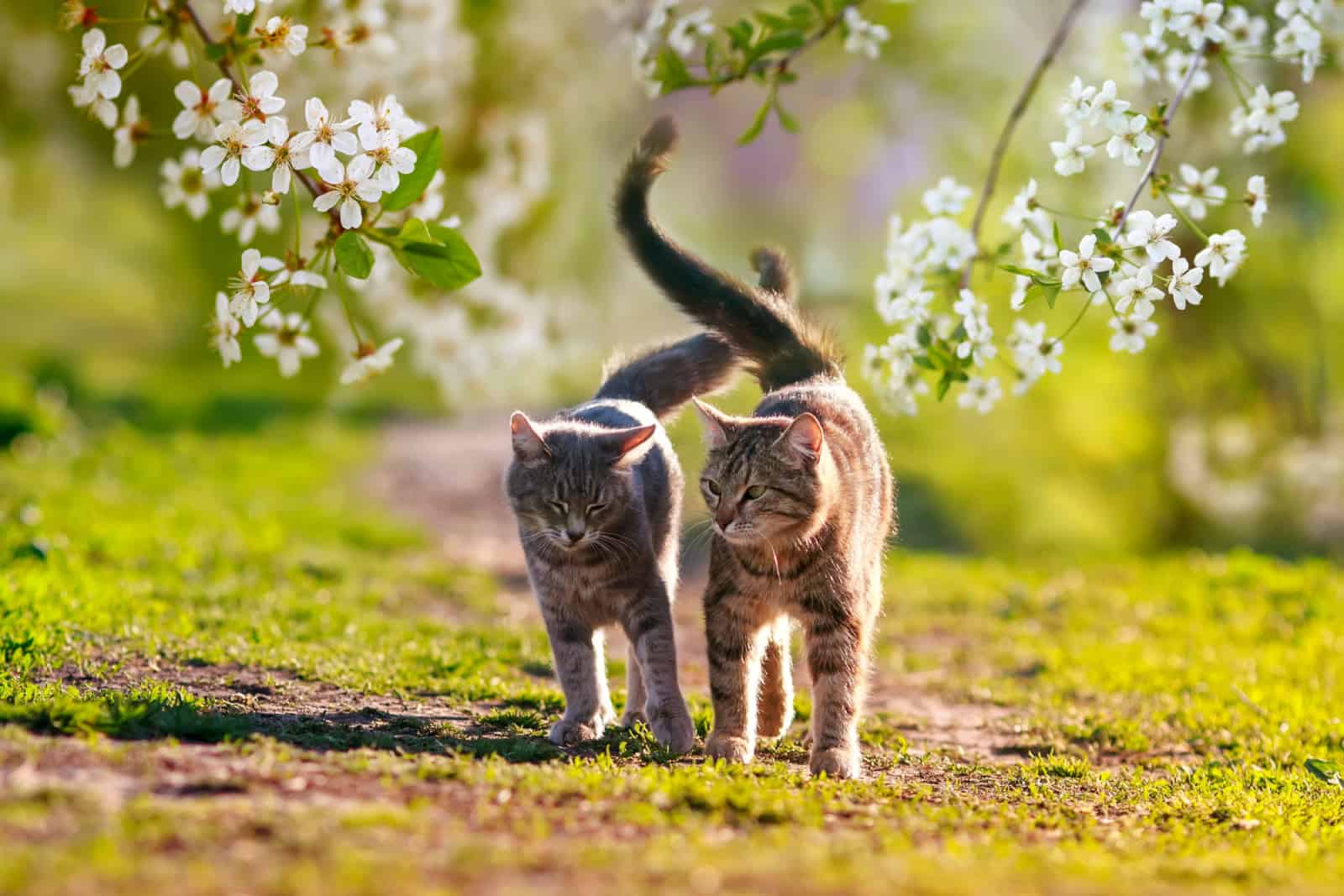
Female Cats
From about four months of age, female cats are sexually mature and can reproduce. However, if she is allowed to get pregnant at this age, it will be a case of a kitten giving birth to kittens. This is risky for both the mother and the kittens.
So, the current recommendation is to neuter your cat at roughly four months of age to prevent unintended pregnancies.
The female is fertile for another 7 to 9 years after giving birth to her first offspring (this will most likely happen at a young age). After that, the cat often can no longer give birth to kittens, though there are some exceptions.
Male Cat
A male cat, also known as a “tom cat”, is old enough to impregnate a female cat at around 6 to 8 months. The reproductive life of a male cat can last up to 14 years.
Certain types of sexual behavior (frequently linked to play) develop before full sexual maturity. Some male cats start mounting, pelvic thrusting, and neck biting as early as four months of age.
Suggested: Can Male Cats Mate With Other Male Cats? Explanation Below!
When Is The Mating Season For Cats?
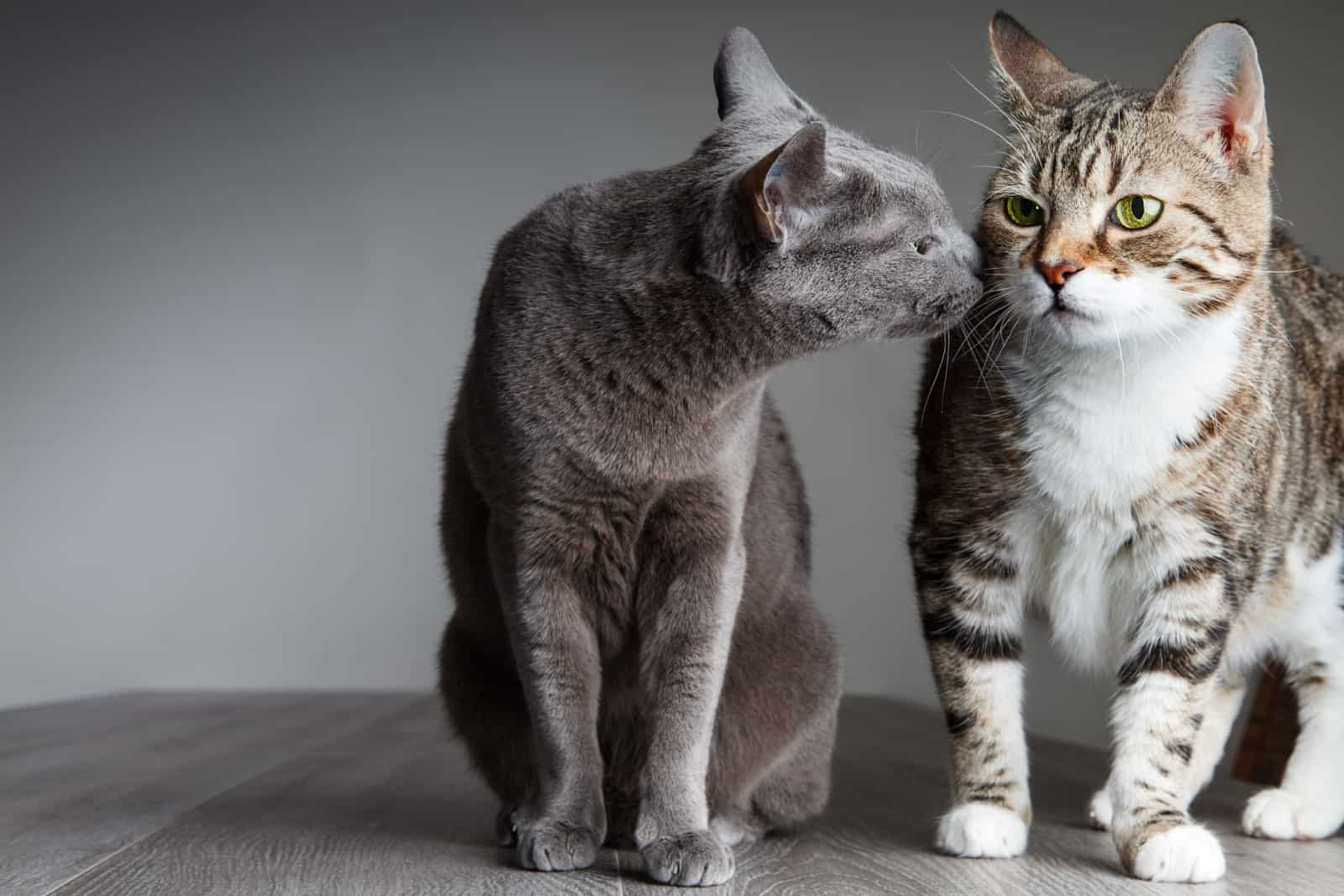
In the Northern hemisphere, domestic cats’ breeding season starts in January (or February) and ends in October (or November).
However, the breeding season is year-round in areas with constant climate (meaning no drastic changes in average daily temperature) and 10 hours of light a day.
It has been hypothesized that the breeding season begins in January or February because the days start getting longer and the temperatures start to rise. This means that by the time kittens are born, food will be abundant, and kittens are more likely to survive.
This is why we see a surge in new kittens every March, April, and May.
Female Cat‘s Estrus Cycle
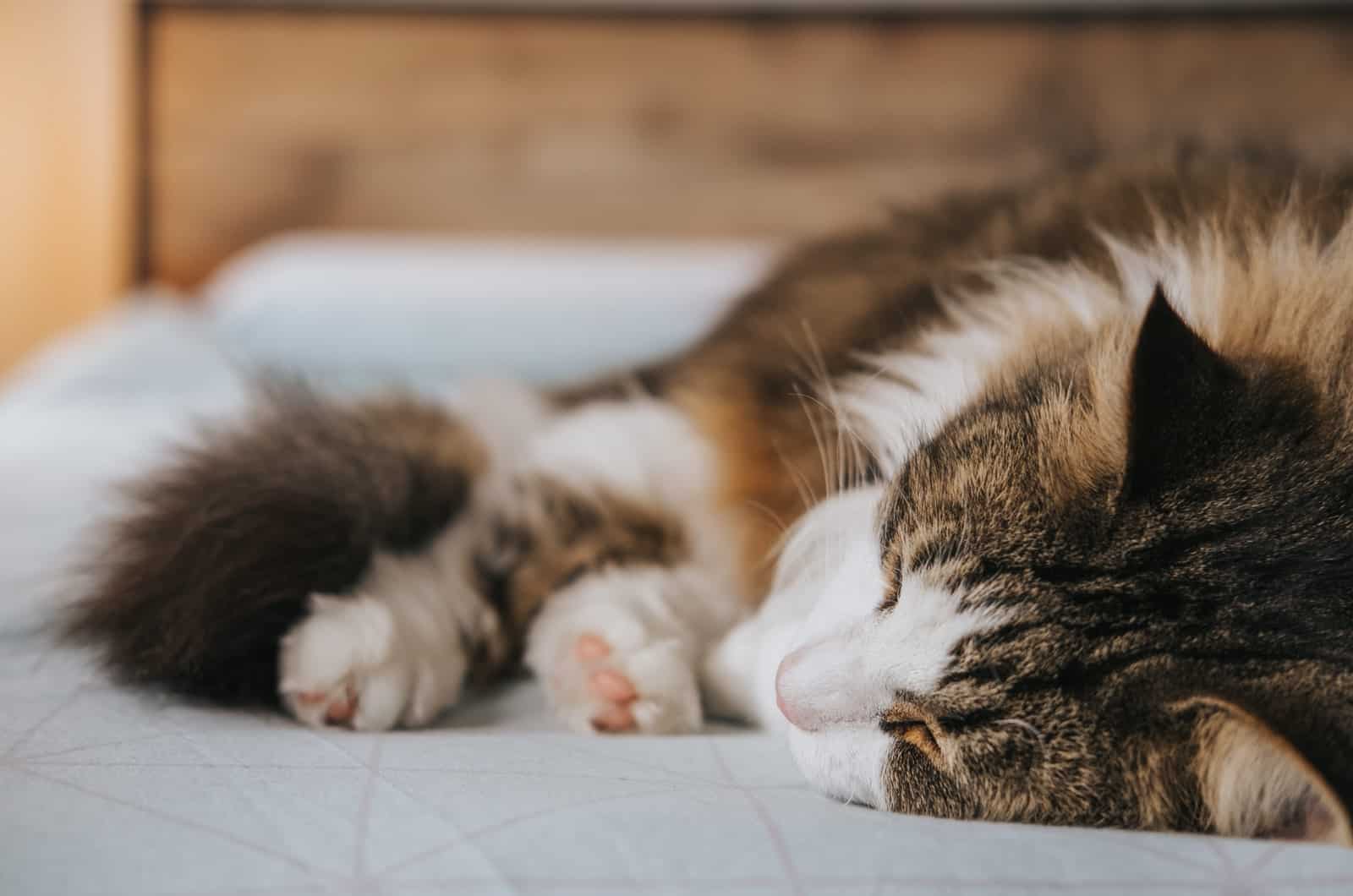
Even though female cats can mate every day of the year, that is not what we observe. In reality, a female cat is likely to mate only within a certain time period.
Periods when a cat is most likely to mate are called estrus or heat cycles, and they last 4-8 days and repeat every 7-14 days.
Note that the length of the estrus cycle or the time between cycles is not set. For example, it might be that one cat’s cycles repeat every week, while it’s every three weeks for another cat.
Every cat is different, and the given numbers are just average. If your female cat’s cycles are shorter or longer, or the time between cycles is shorter or longer, that is perfectly fine too!
Estrogen is the hormone that controls estrogen cycles – the female cat goes into heat when her estrogen levels increase, and the estrus cycle (heat cycle) stops when the hormone levels fall.
Female cats display many characteristic behaviors during these short periods, known as estrus cycles.
How Can You Tell If A Female Cat Is In Heat?
Every experienced cat owner has seen these characteristic behaviors many times:
• Being more affectionate than normal
• Excessive meowing (or even yowling)
• Rubbing against everything and rolling on the floor
• Raising her hindquarters in the characteristic “booty up” lordosis position
• Spraying to spread pheromones
• Grooming more than usual
While these behaviors are perfectly typical for a female cat looking for a mate, owners who have never had an unneutered female cat may assume that their pet is in pain and that they are symptoms of an underlying health issue. However, that is not the case.
Do Male Cats Have Heat Cycles?
Male cats do not have heat cycles, this is only characteristic of female cats.
Female cats tend to mate only during their heart cycles, while male cats can mate any time of the month or year! Unneutered male cats (otherwise known as toms or tomcats) are always on the lookout for a female cat ready to mate.
Littermates Can Have Different Fathers
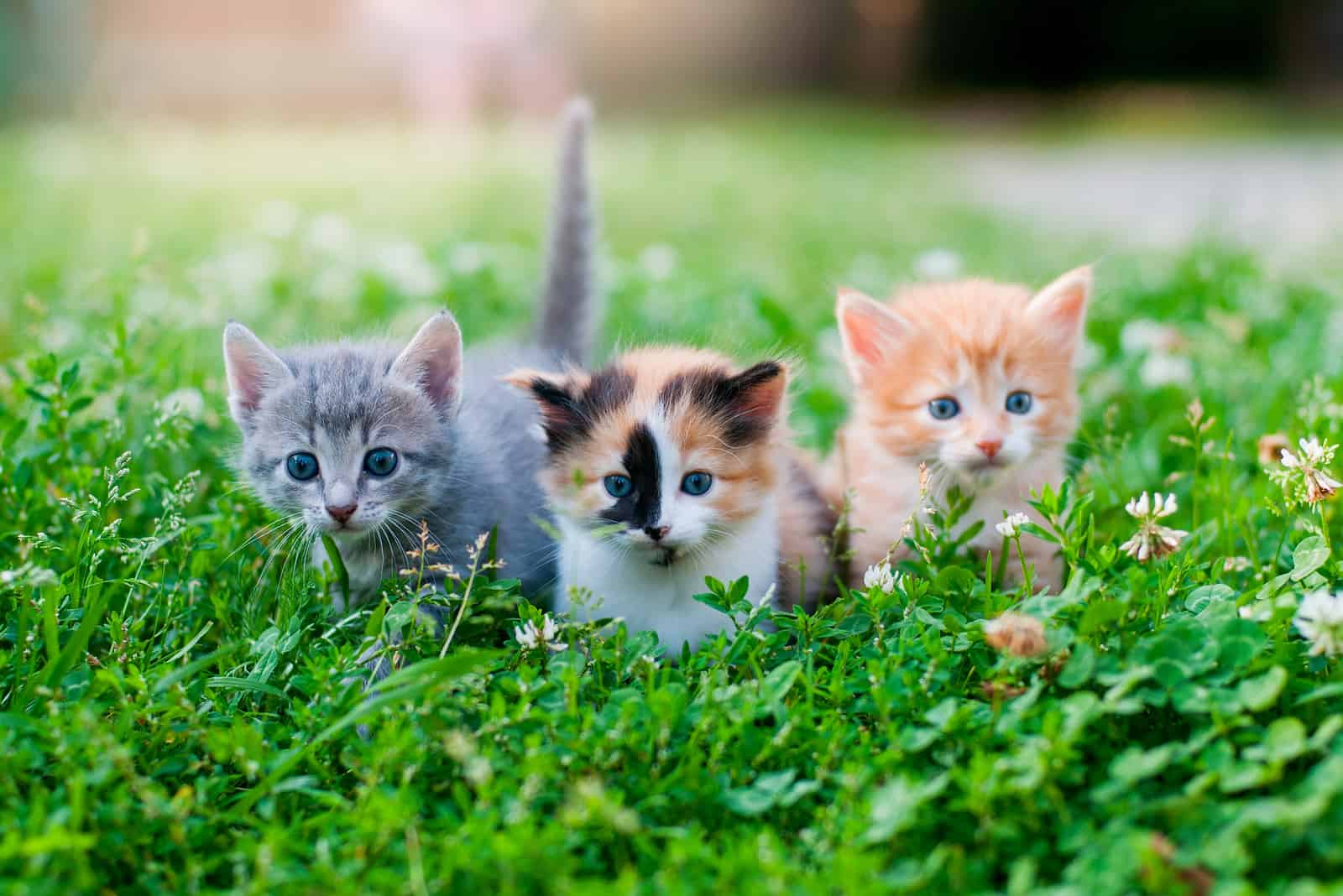
Have you noticed that kittens of the same litter do not always look alike? One litter of kittens can be composed of, for example, three black kittens and three orange kittens. The presence of vastly differently-looking kittens indicates that the kittens probably have different fathers.
Superfecundation is a term that describes the fertilization of a female cat’s eggs by several different “sperm donors” (tomcats).
Eggs fertilized by one male cat and eggs fertilized by another male cat will implant the uterine lining simultaneously, resulting in a litter of kittens in which the kittens have different fathers.
How is this possible? A cat’s eggs can get fertilized within a 24-hour window. During that time, a cat can mate with many different male cats. Hence, different male cats can fertilize the same female cat and father kittens of the same litter.
Feline Pregnancy

A typical cat pregnancy lasts nine weeks.
You will probably not be able to notice that your cat’s pregnant during the first few weeks of pregnancy. One of the first clues your beloved cat might be pregnant is swelling and reddening of the nipples.
As the fetuses grow, more signs start to be observable, with weight gain becoming more apparent. You will also begin to notice your pregnant cat‘s belly becoming more round, meaning the kittens are growing.
Cat birth can last from a few hours up to a day. After the labor ends, the mother cat will start nursing her newborn kittens.
There are a number of potential complications that can arise during labor, so it’s recommended that the cat owner keep an eye on the mother cat and look for possible changes in behavior that can indicate something might be wrong,
Check out: Why Do Cats Eat Their Babies? 7 Valid Reasons
Preventing Feline Pregnancy: Neutering And Spaying
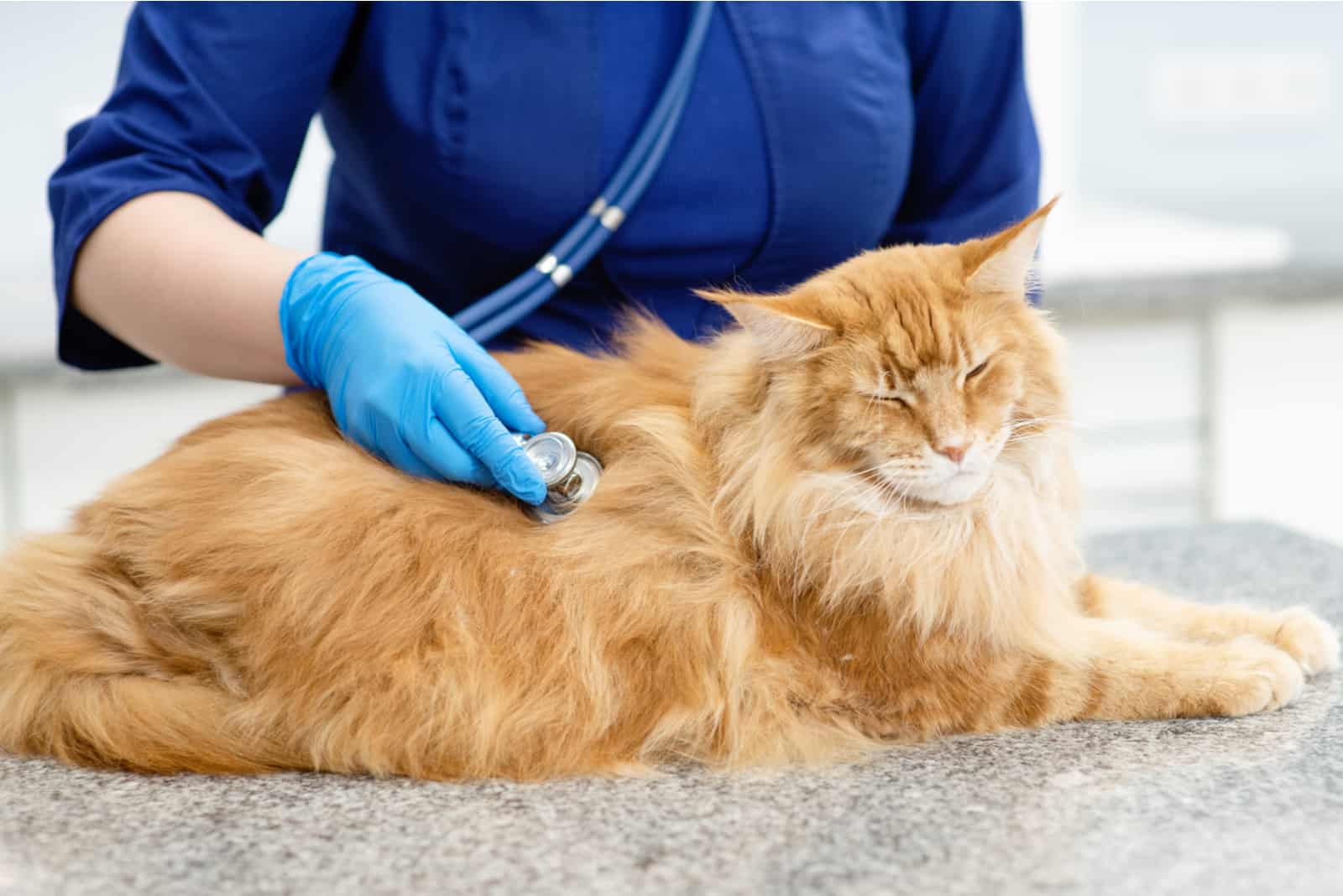
Most cat owners do not want to contribute to the already large number of unwanted cats and kittens searching for homes by breeding their cats. As a result, owners turn to spaying and neutering their female and male cats, which is the most effective technique to avoid unintended pregnancies.
It is advised to have these operations completed prior to the cats’ reaching sexual maturity (when they may reproduce), which occurs at roughly four months of age. Pet owners, if your cat has surpassed this age, it does not mean it cannot get spayed/neutered.
Even though it’s recommended to have spaying/neutering done at a young age, older cats can have the procedure done too.
Spaying
How Is It Performed?
Spaying is a surgical procedure performed by a veterinarian, and it involves the removal of a female cat‘s ovaries and uterus. It is usually done through an incision in the cat’s belly. The incision does require stitches which are removed after a week or two.
Cats that have undergone spaying are usually allowed to go home the same day! It is advised to confine the female cat for a couple of days after spaying until the sutures are healed nicely.
What Are The Benefits?
Spaying benefits the cat, the cat owner, and overall cat population control. Spayed cats have a lower risk of developing certain types of cancer (such as mammary carcinoma) and no risk of getting uterine or ovarian cancer.
Apart from this, spaying eliminates heat-associated behaviors, such as excessive vocalization that can be quite annoying for the entire household.
Not to mention that having a cat spayed means no chance of pregnancy, meaning no contribution to the growing problem of cats overpopulating streets and shelters. Cats are prolific breeders, so this issue can be combated by having cats spayed or neutered.
Neutering
How Is It Performed?
Neutering is a surgical procedure involving removing both testicles through a tiny incision into the scrotum. Most of the time, the incision is so small that no sutures are needed. This procedure is performed under general anesthesia, so the discomfort is minimal, and the male cat can go home the same day.
What Are The Benefits?
Unneutered cats tend to roam over large areas, which increases their chances of getting hit by a car.
Furthermore, these cats constantly mark their territory, have urine with a strong, pungent smell and display aggressive behaviors such as fighting with other male cats. Fighting increases a cat’s chances of getting hurt or contracting a virus, such as feline immunodeficiency virus.
If a male cat is neutered on time, all of these problematic behaviors are prevented. Many experienced cat owners would say it’s much easier to live with a neutered male cat than an unneutered male cat.
Apart from the neutering benefits to the cat and the cat’s owner, there is the extra benefit of population control. One male cat can father thousands of kittens over his lifetime, so neutering is a very efficient way to prevent that from happening.
See also: Can A Neutered Cat Still Mate? Explained!
FAQ
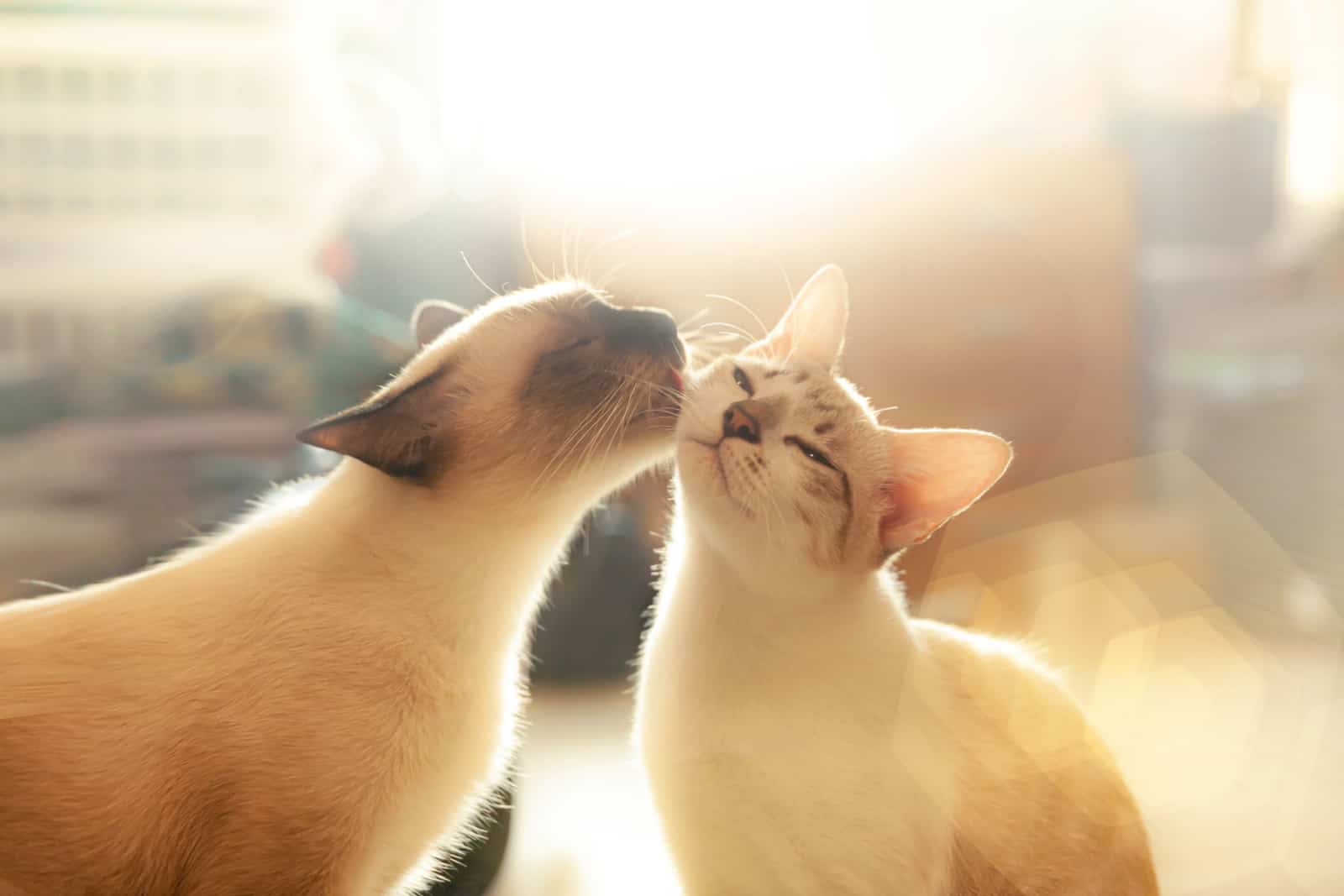
How Long Does It Take For Cats To Mate?
The male first bites the female’s neck before mounting and climbing on top of her. Then he finally penetrates her by thrusting his pelvis into her. The act of mating can last anywhere up to 4 or even 5 minutes.
Why Do Cats Have To Mate?
The main reason any living being mates is the innate survival instinct. It is in every living being’s nature to pass down its genes, and the only way to do so is by mating and subsequently having offspring.
Do Female Cats Enjoy Mating?
Because of the unbearable scratching caused by a male cat’s barbed reproductive organs, female cats cry as they mate. Because of this, it’s safe to say that female cats most probably do not enjoy the act of mating.
How Do I Know If My Female Cat Has Mated?
There truly isn’t a way to know if she mated or not if she is in heat.
The pain from the barbs on the male cat’s penis will drive the female cat to yowl loudly.
She might even turn and strike out at the tomcat. The female would thrash and tumble about after mating, appearing to be quite disturbed.
Because tomcats sometimes grip there with their mouths during mating, you could see some dried saliva on the back of her neck. If not, I would take her for a checkup at the vet after four weeks.
Apart from the change in behavior and some dried saliva on her back, there aren’t any other clues about a female cat’s recent mating activity. If the cat is pregnant, you will start noticing signs after 4 or 5 weeks.
In Conclusion
How do cats mate? First, they court for a little while, then the male cat mounts the female cat, bites her neck, and positions himself onto her. The act of mating lasts just a few minutes, after which the cat starts to roll on the ground and may even attack the tomcat she just mated with.
Female cats scream when they mate, and often even male cats yowl. This might sound a bit unsettling for a person who hears the screams. However, this is completely normal for cats.
The act of the tomcat’s barbed penis being removed from the vagina is quite uncomfortable for the queen, which results in her screaming loudly.
If a female cat is healthy and has mated during heat, she will most likely get pregnant, and she can get pregnant with multiple tomcats. Spaying your female cat is highly recommended if you’re a cat owner and you wish for no kittens in your home.
Spaying and neutering have many health benefits for the female and male cats in question, preventing them from contributing to the growing problem of cat overpopulation. Apart from this, spaying and neutering prevent (or stop) unwanted behaviors, such as spraying.
I hope this article was informative and you’ve learned something new!
Related Articles:
Why Do Cats Raise Their Butts? 7 Fascinating Reasons
My Indoor Cat Is Obsessed With Going Outside! 5 Reasons
How To Know When A Cat Is Done Giving Birth: 7 Signs
Like this post? Share or pin it for later!



